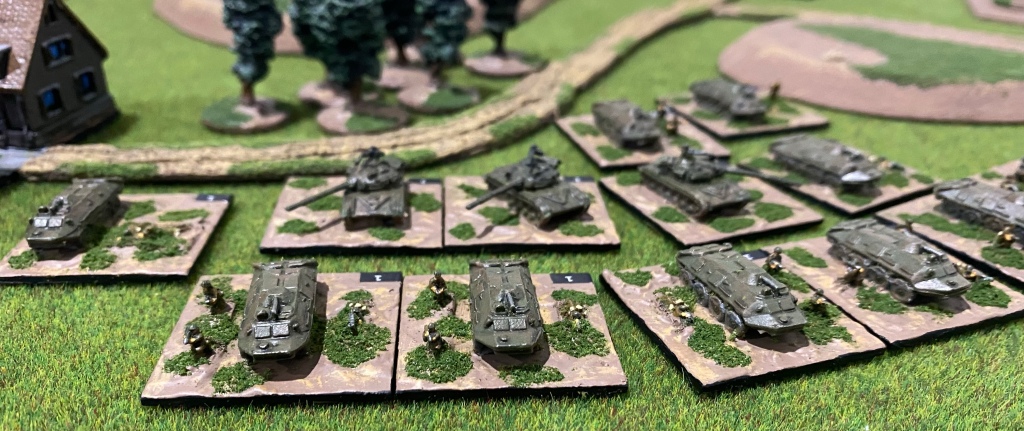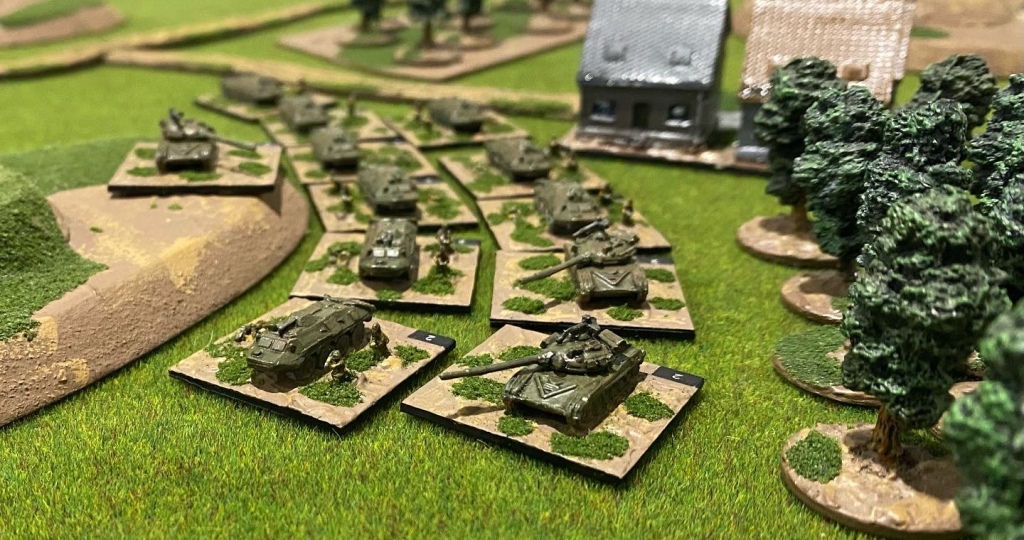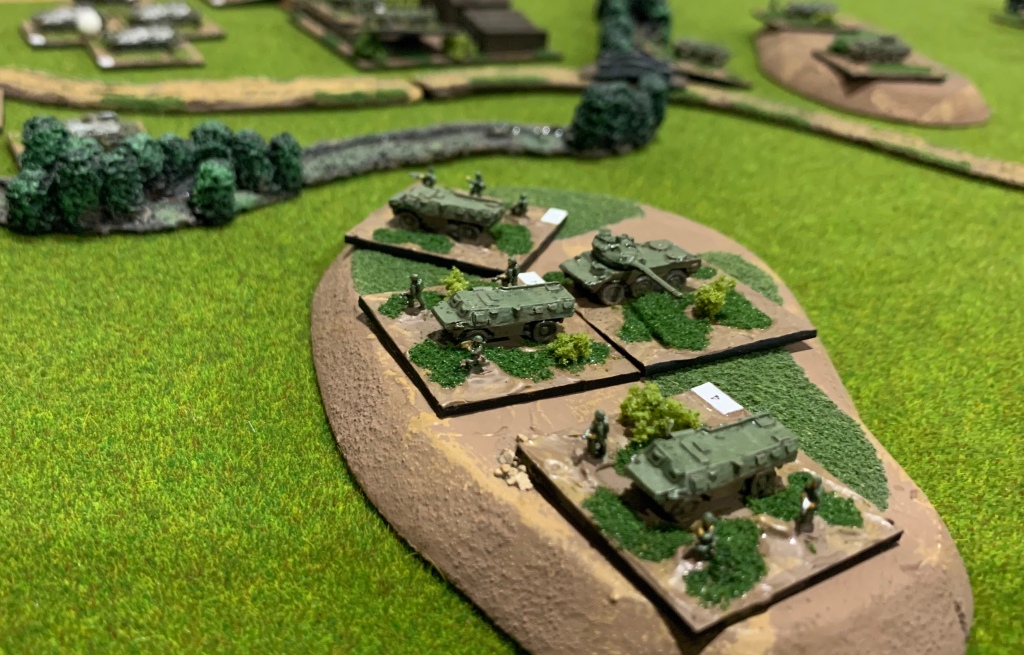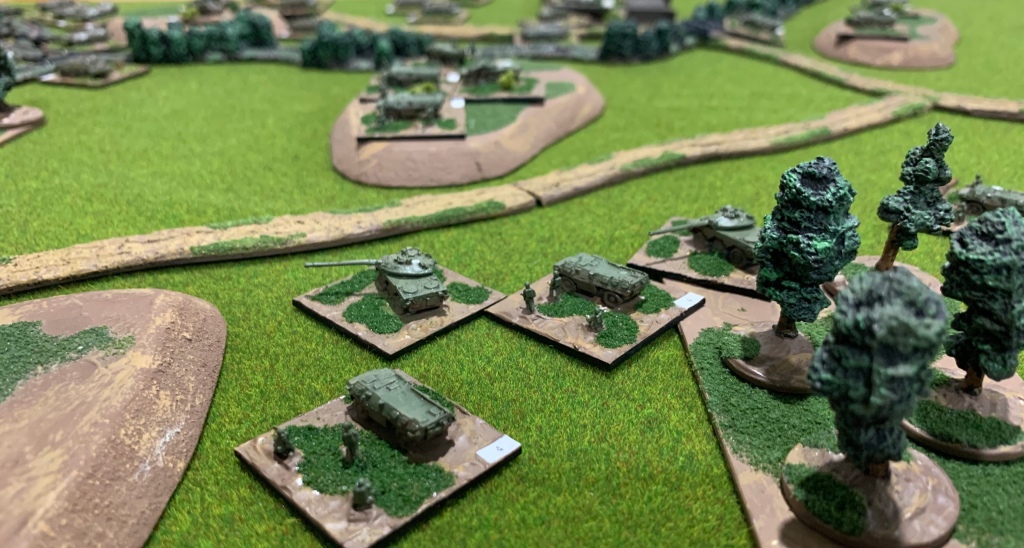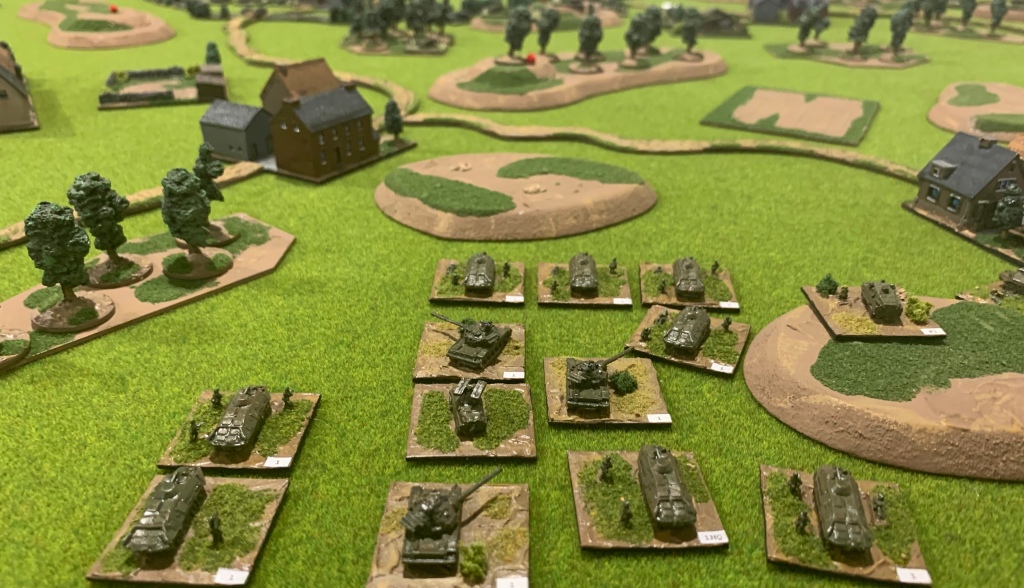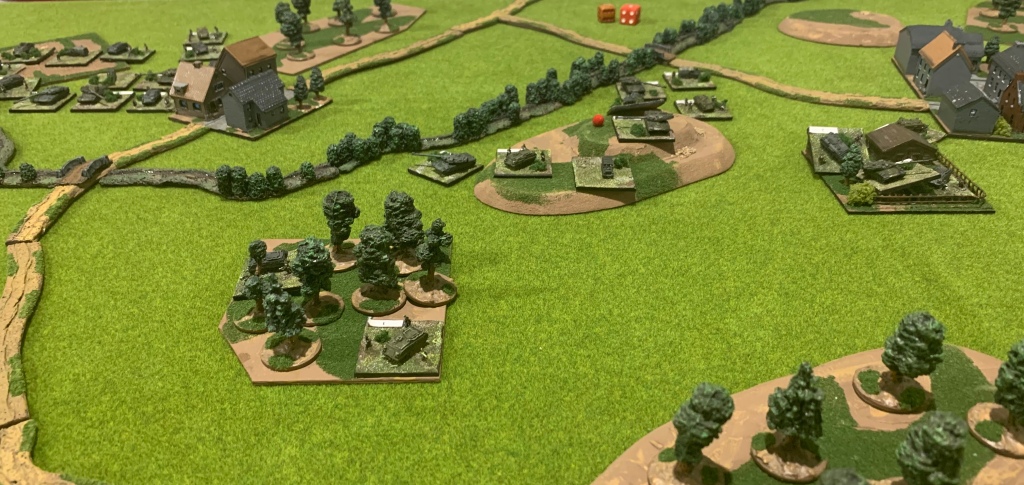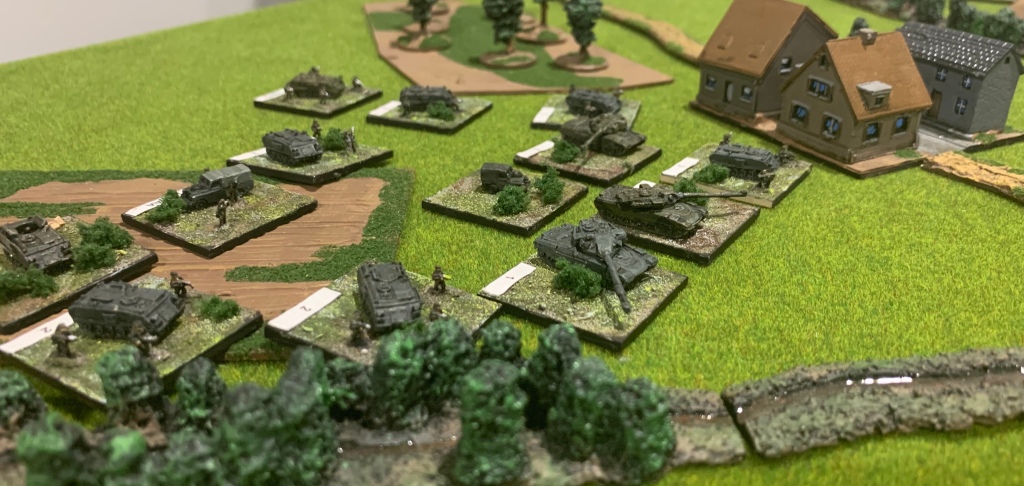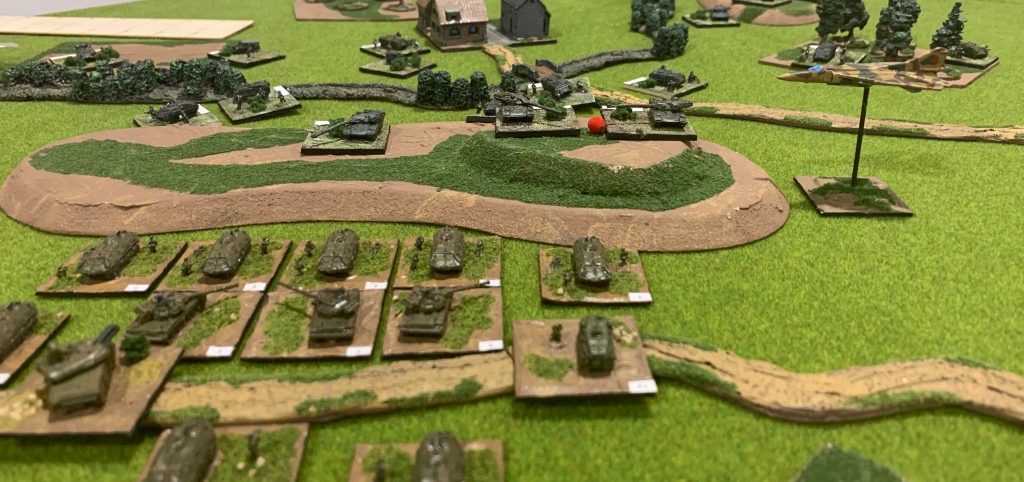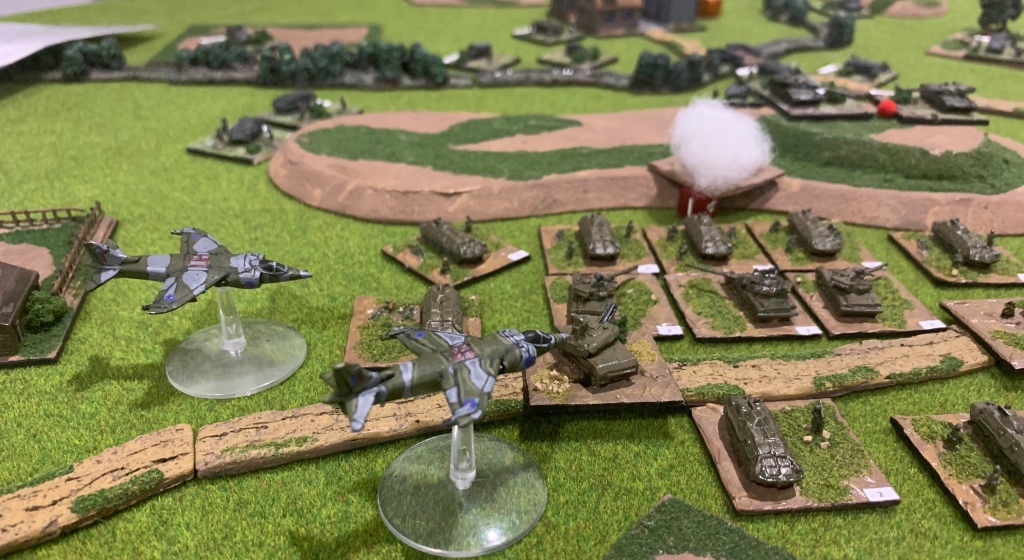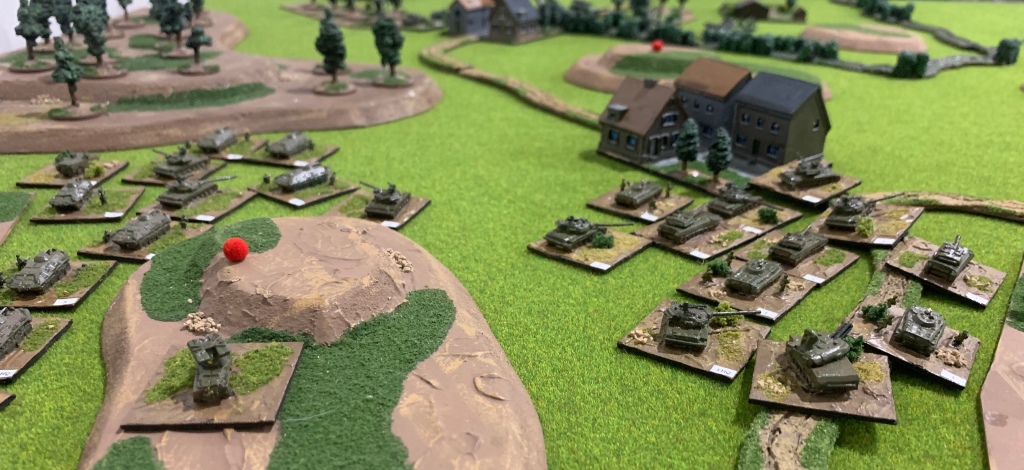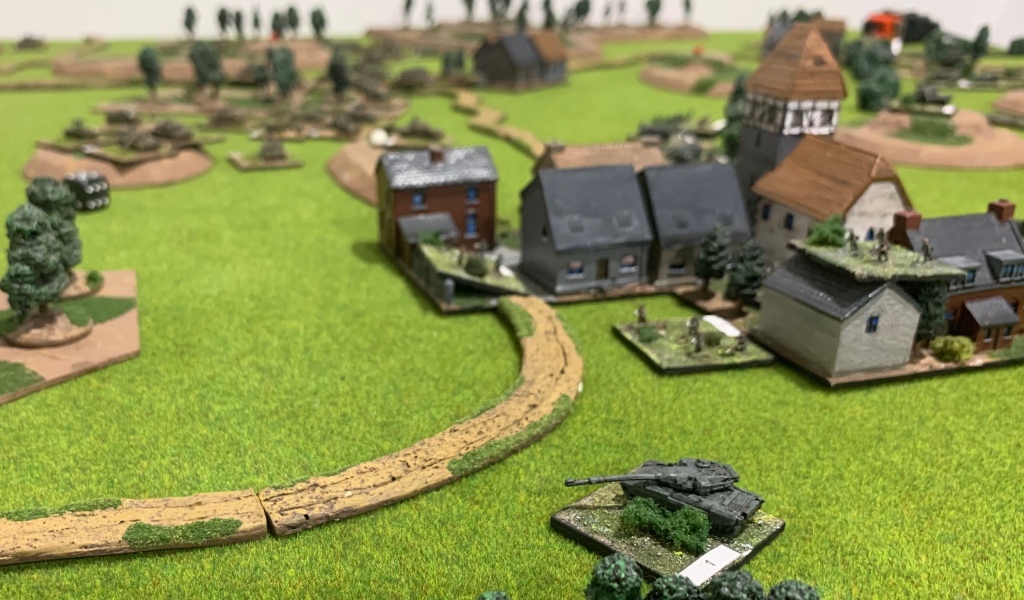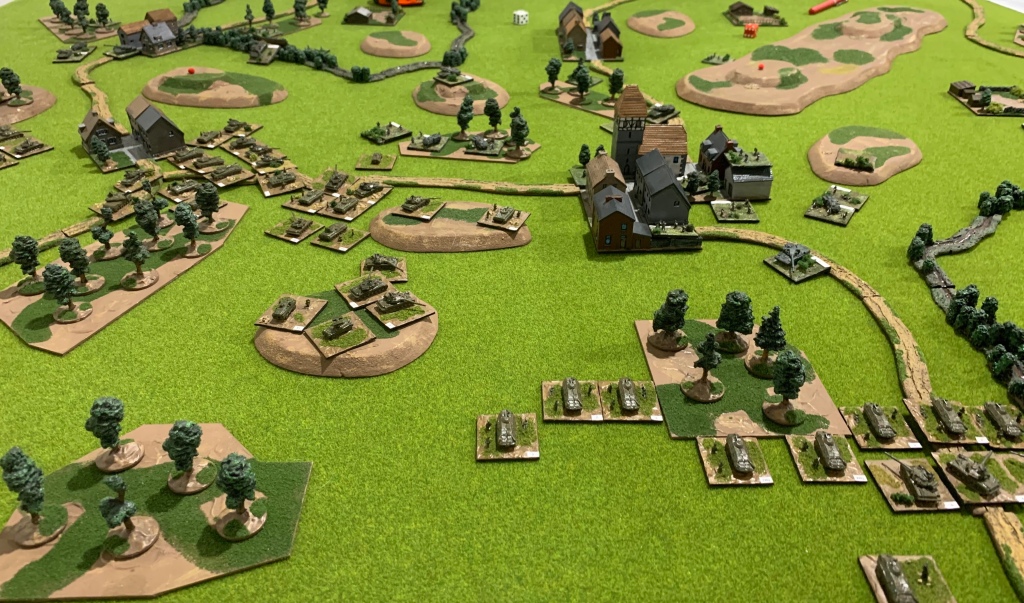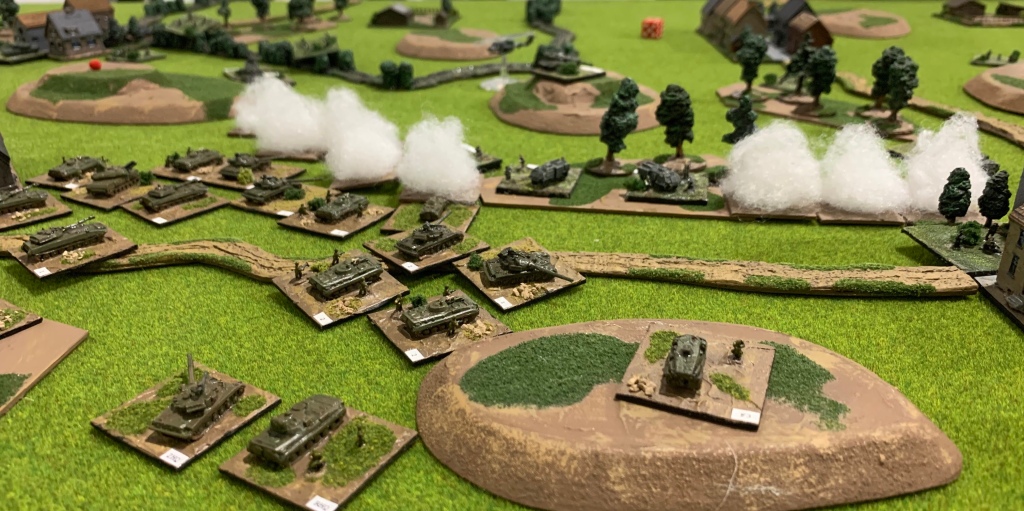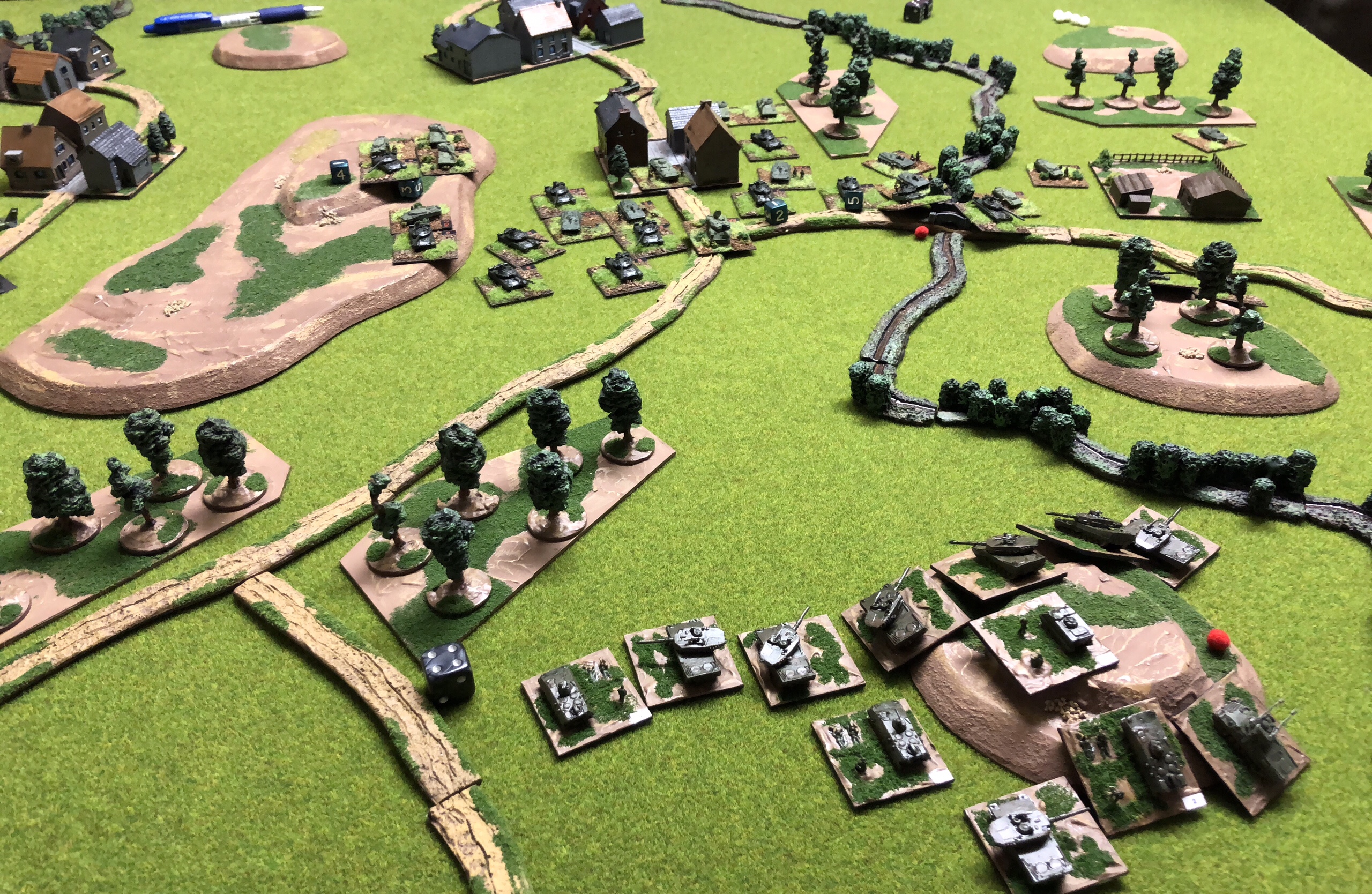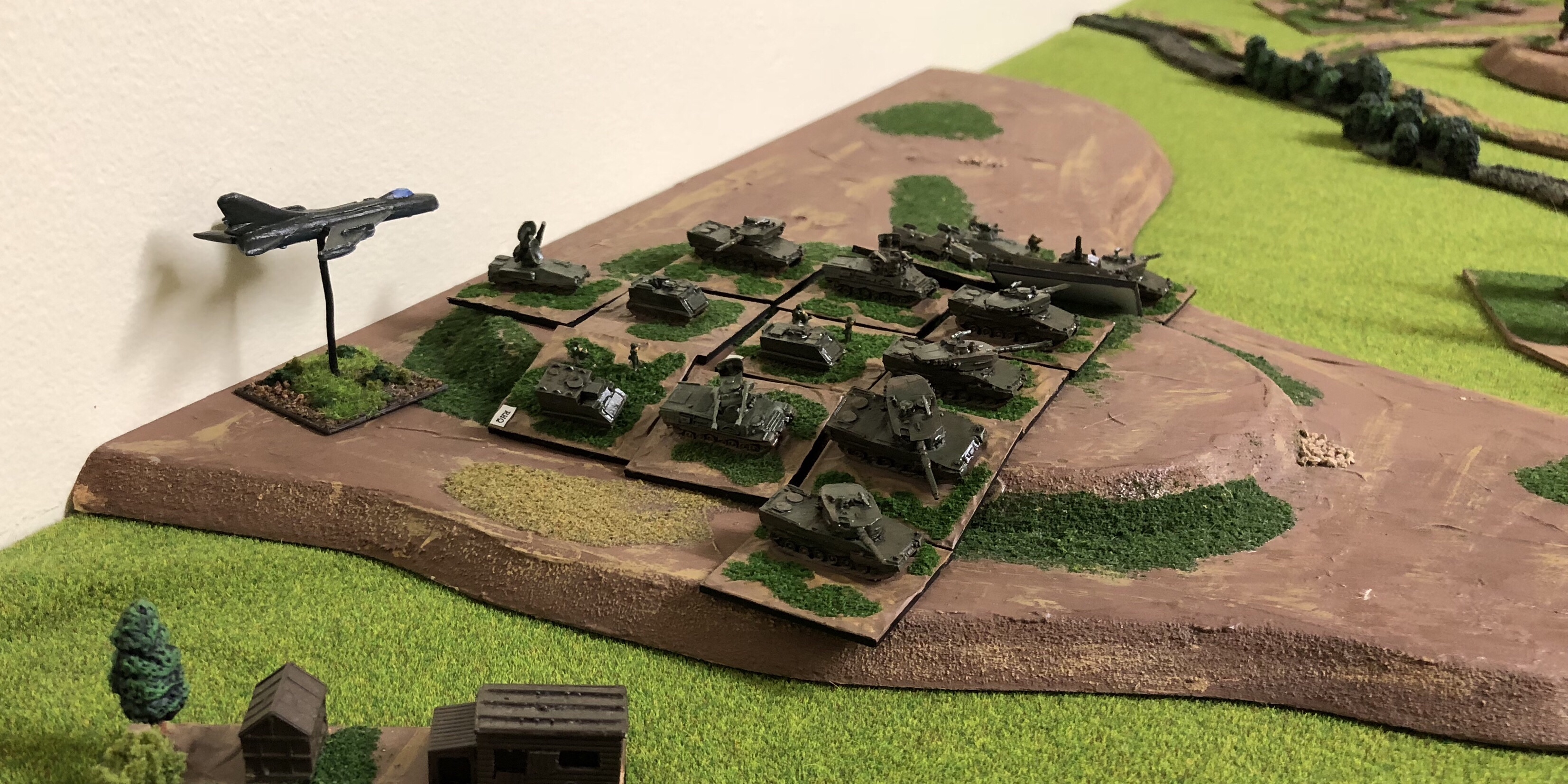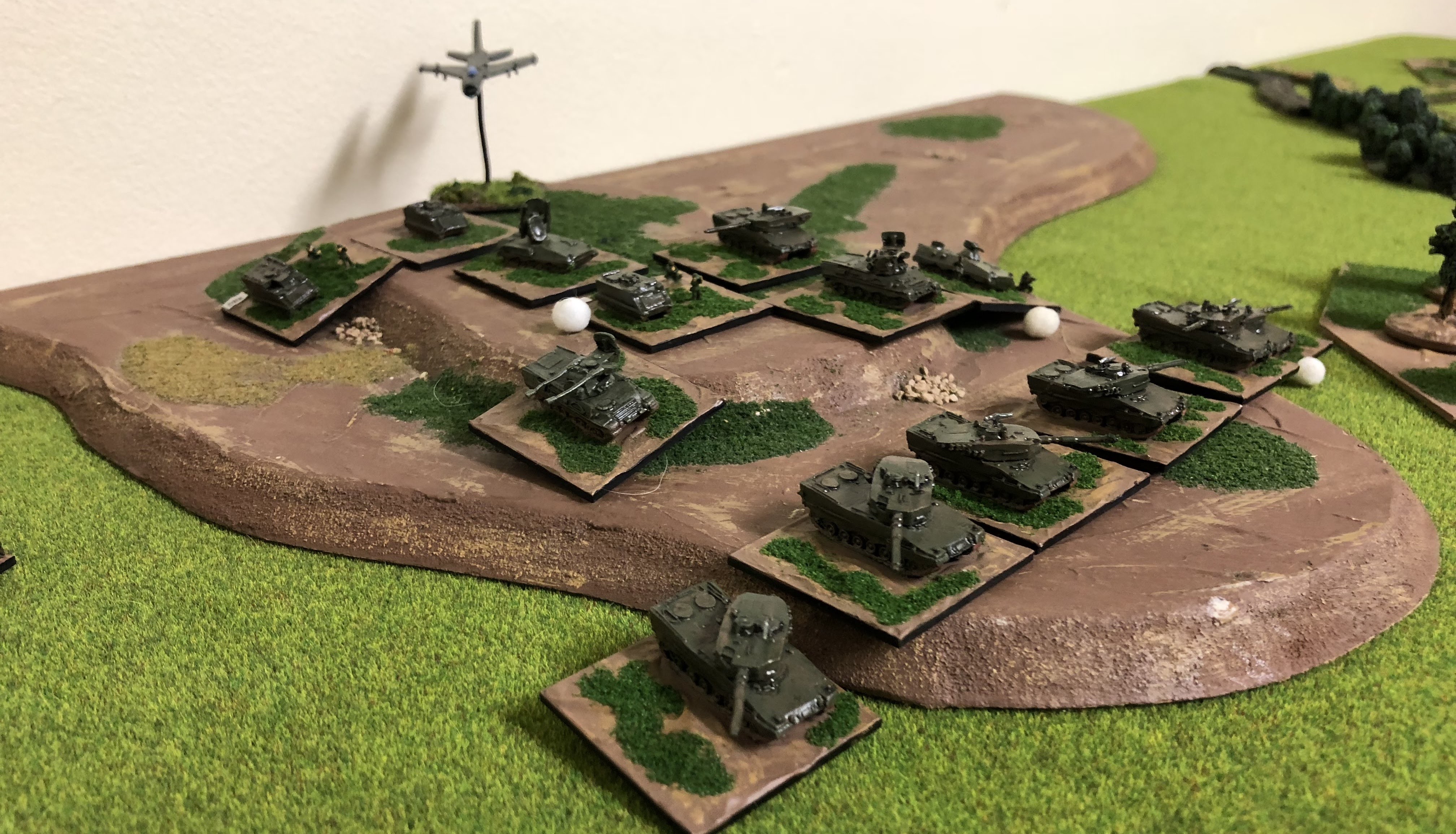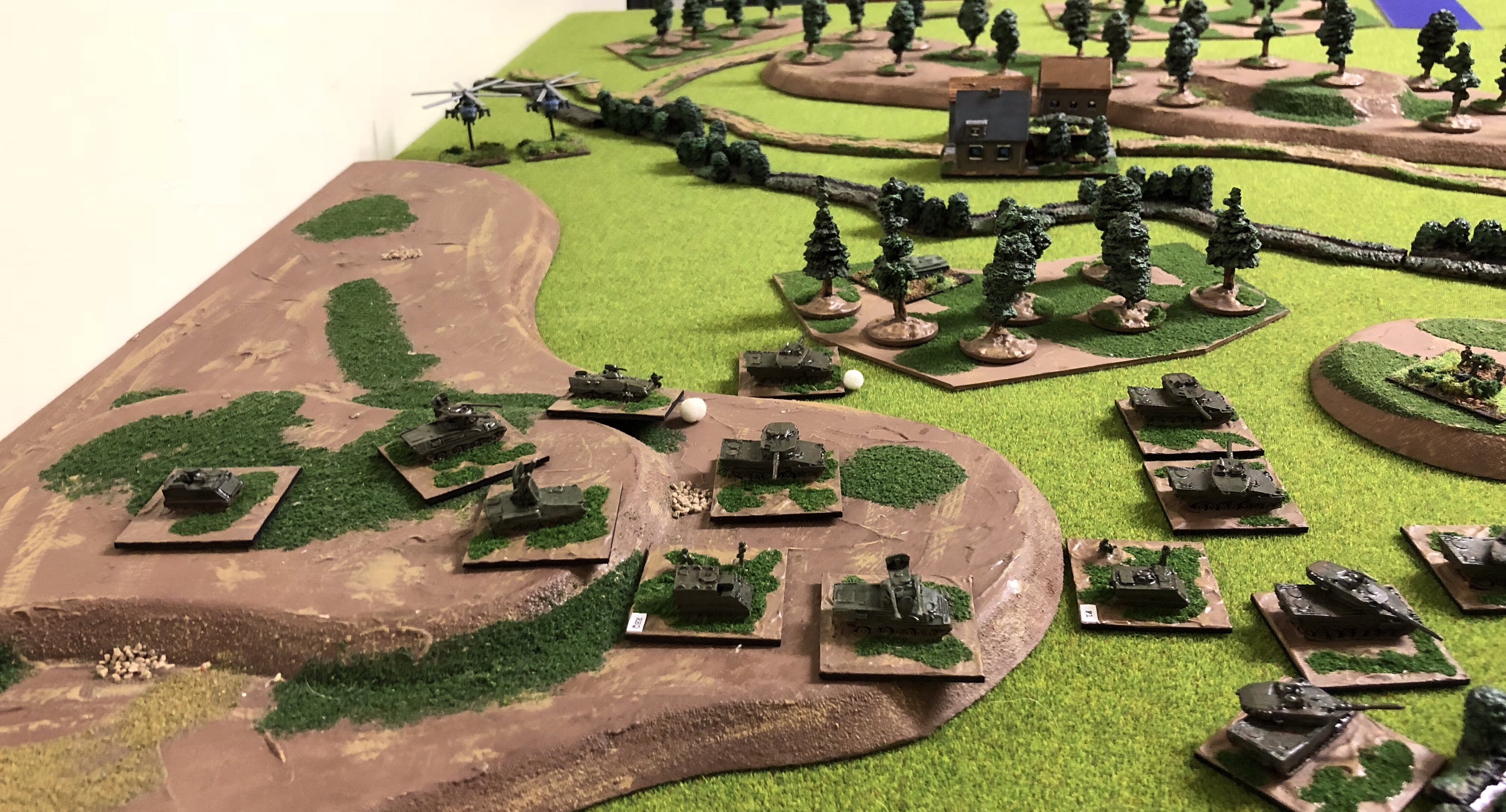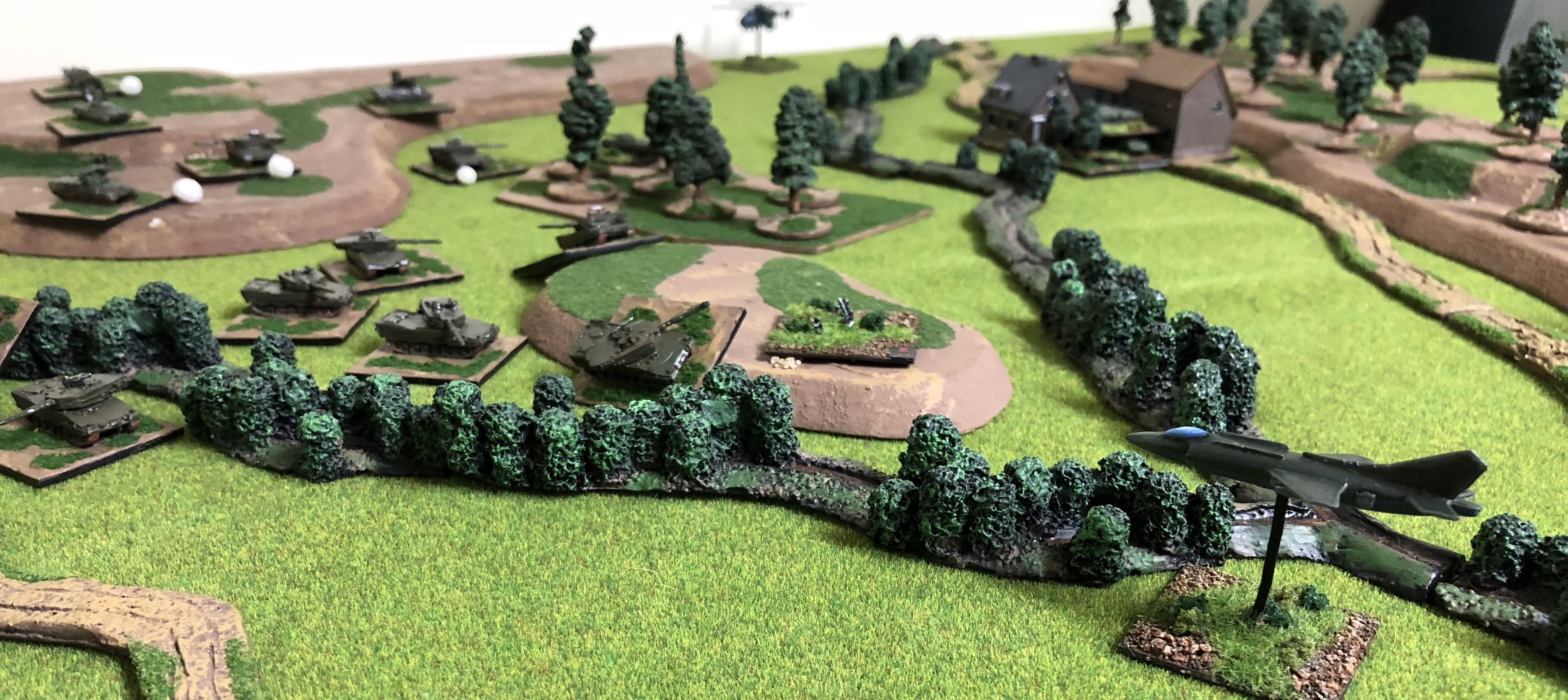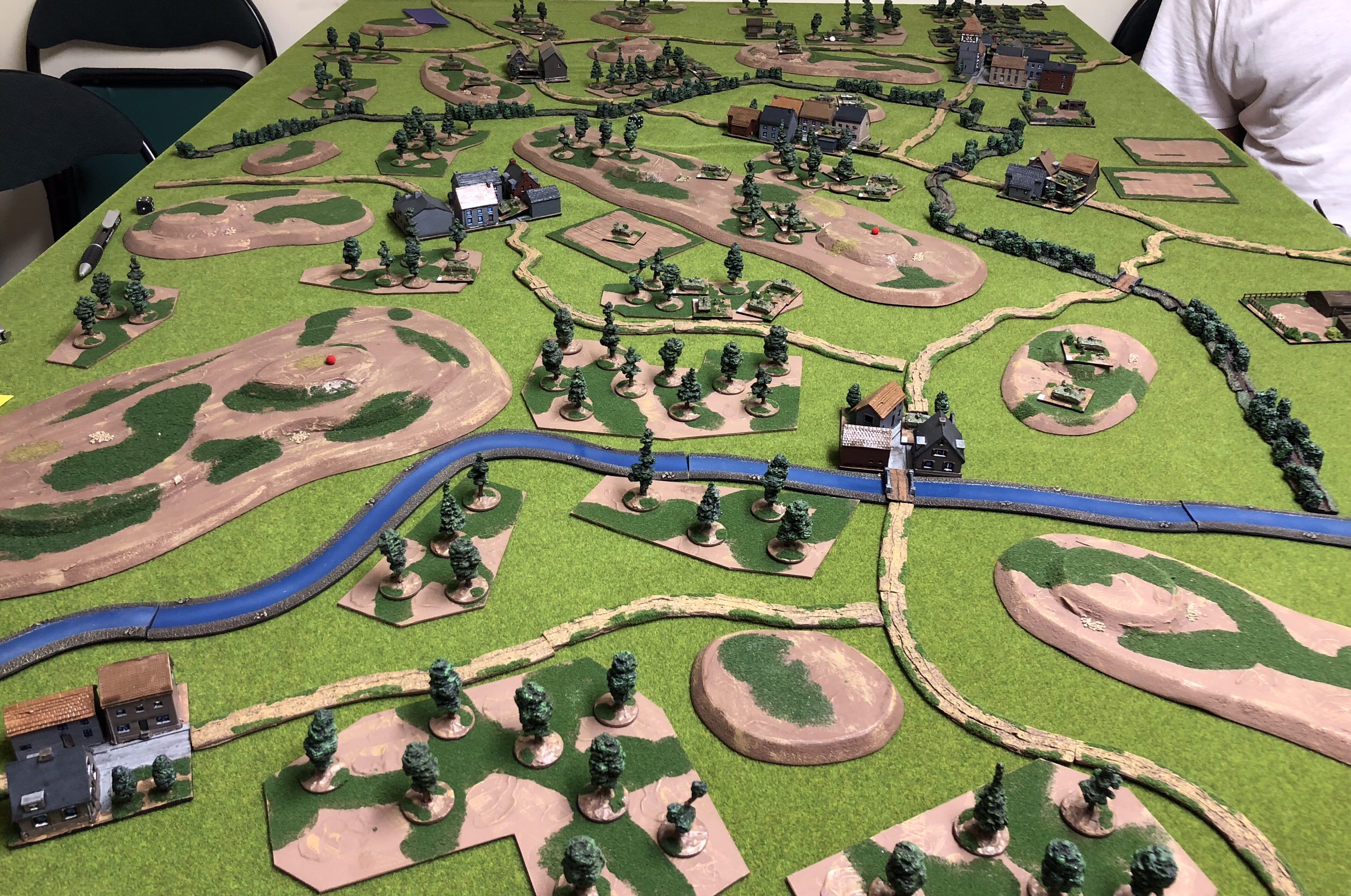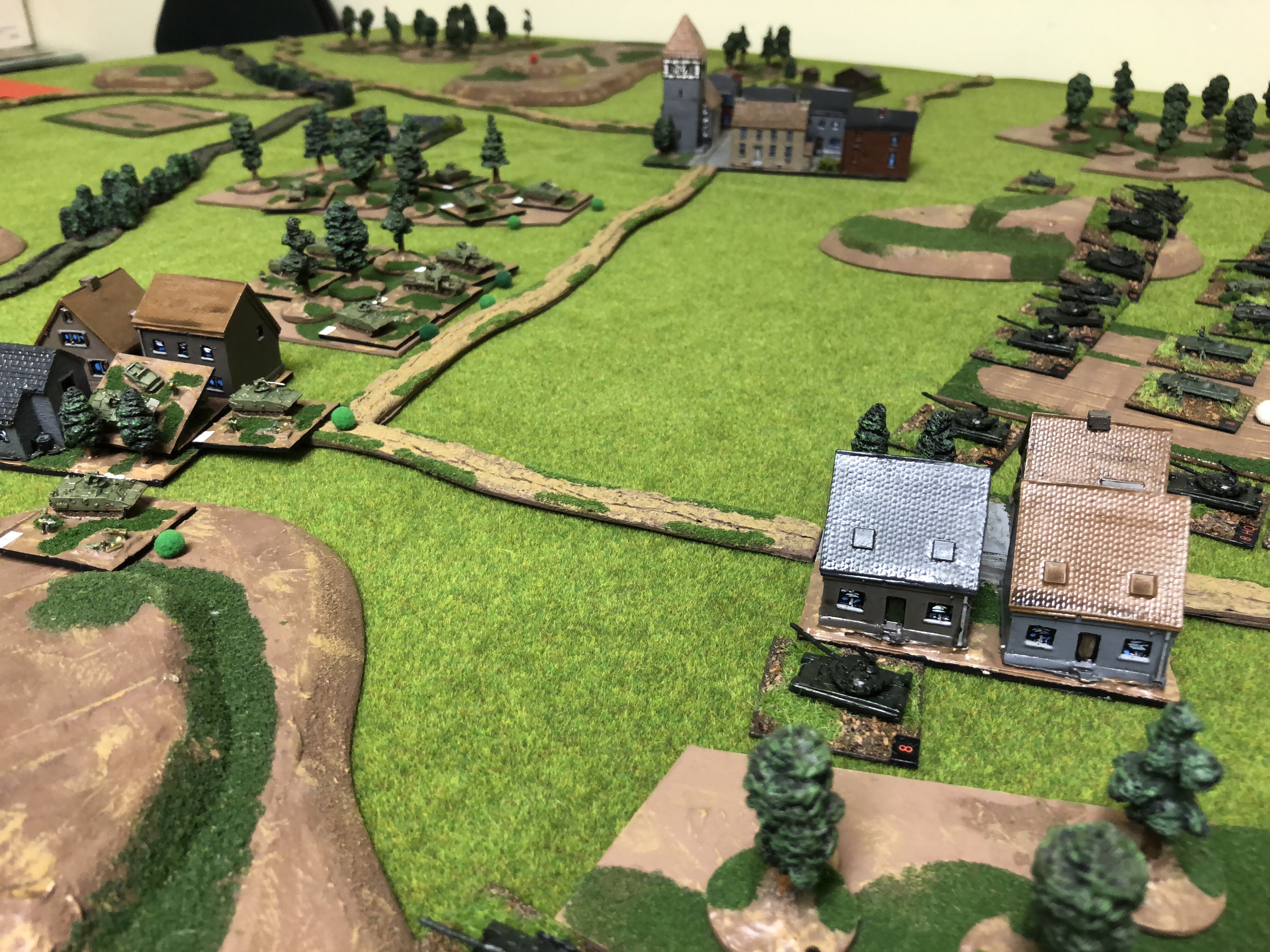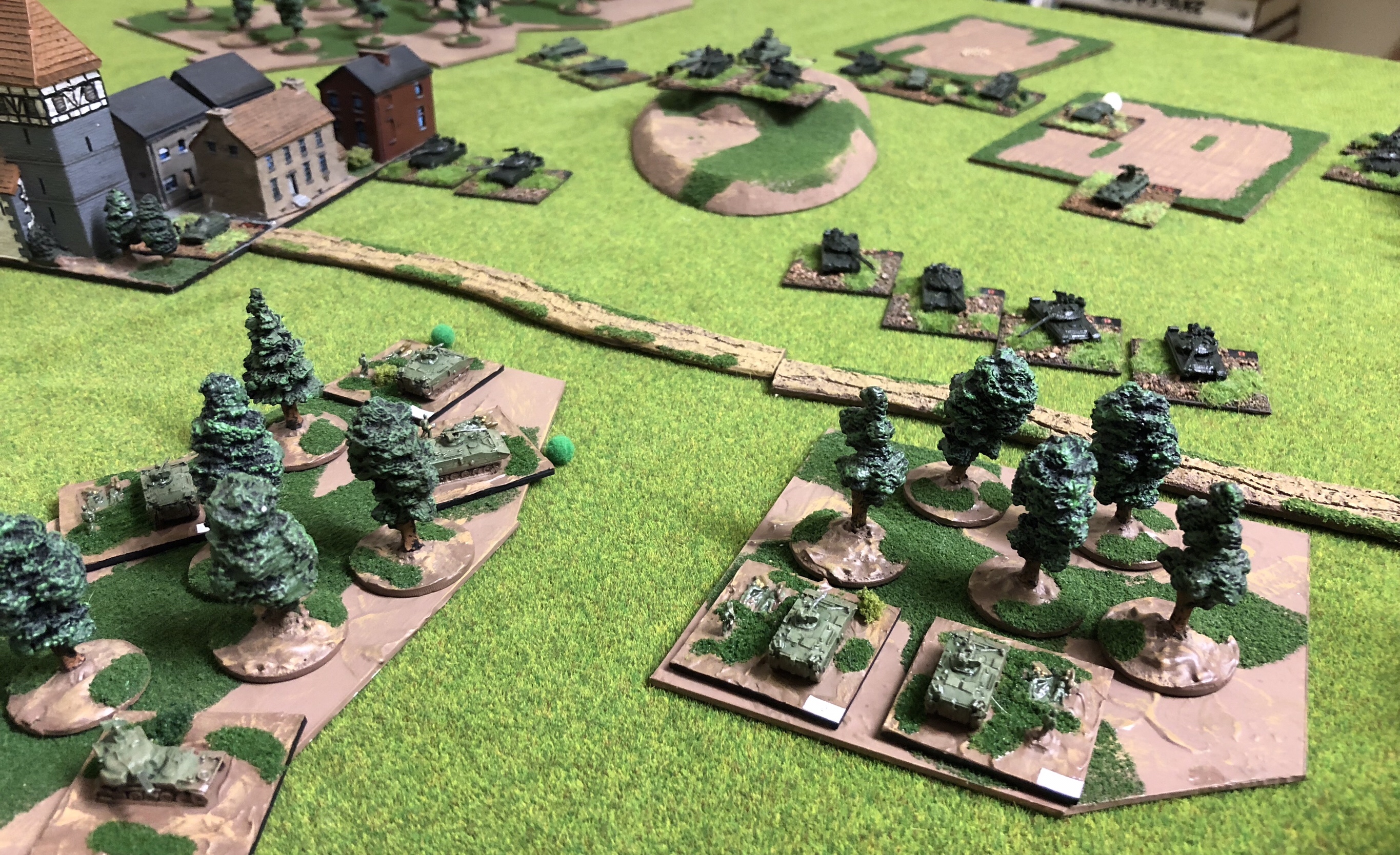One of my regular wargaming opponents recently suggested a Modern Spearhead game, specifically he was keen for a rules refresher. As I was providing the miniatures for both armies it seemed the perfect opportunity to deploy the first of my 1980s Americans on the table, having completed two battalions last year.

What follows is a brief description along with a few photos of the game. I hasten to add it isn’t really a battle report. Given that the game was designed to refamiliarise my opponent with the rules it wasn’t surprising that we didn’t complete the game, time disappearing rather quickly.
Our scenario was set in early 1983 and found a Soviet Motor Rifle Regiment (MRR) conducting a breakthrough following recent successes. Two American battalions, drawn from the 3rd Infantry Division, nicknamed “Rock of the Marne”, moved to block the Soviet advance.

The 2nd Battalion of the 244th Motor Rifle Regiment (2/244th), part of the 27th Guards Motor Rifle Division, were ordered west to secure a small town before moving northwest to secure a ridge. Simultaneously support assets, including mortars and air defence elements, deployed in support. To the immediate south was the 1st Battalion. Operating independently was the 3rd Battalion, having been ordered to conduct a flanking manoeuvre to the north.

The American 1/30th Mechanised Infantry Battalion moved over relatively open terrain in the centre of the area of operations. The battalion allocated one of its mechanised infantry companies to the 2/64th Armoured Battalion and received a M1 company in its place. The M1 company is visible leading the battalion. A M113 platoon is in immediate support as is a FAO and two platoons of M901s. Following on is a reserve infantry company and various HQ and anti-aircraft elements.
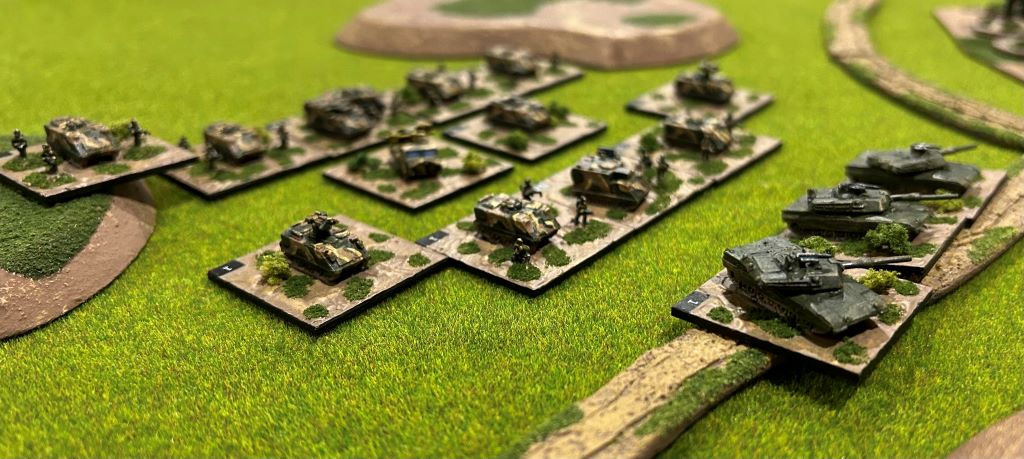
To the south of the 1/30th was the American 2/64th Armoured Battalion. This battalion was armour heavy with seven tank platoons, having lost one platoon earlier, but has an infantry company, noted previously, in support. The constrained terrain has created a bottle neck. Indeed, Soviet intelligence did not expect an armour heavy battalion to operate in the more restricted southern sector of the battlefield.

Below, a general view of the area of operations. The two American battalions are visible advancing from the left while the two Soviet battalions are advancing from the right. As noted previously the Soviet 3/244th Motorised Battalion is some distance to the north having been ordered to conduct a flanking movement. As such it is not currently visible.
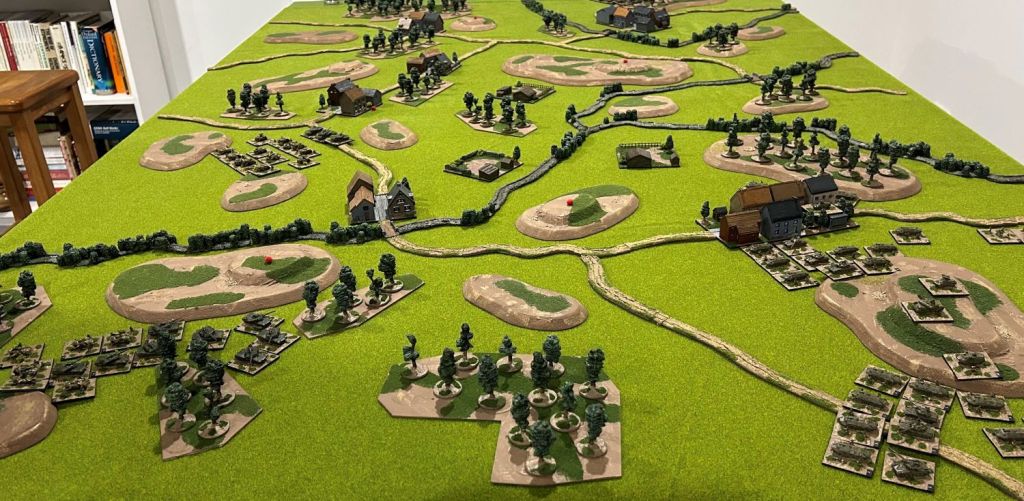
Below, the situation as two Soviet Motor Rifle battalions, visible in the foreground, near the advancing 2/64th Armoured Battalion just prior to contact.

As the Soviets push forward their communications are degraded by American electronic warfare actions. Simultaneously, advanced BTRs and T-64B platoons are engaged by lead M1 tank platoons. Fortunately due to the constrained nature of the terrain the number of M1s engaging was restricted.
The Soviet Regimental commander now orders two mechanised companies of the 1/244th Battalion to advance through the woods while the battalions T-64Bs engaged the M1s at long range. Simultaneously T-64Bs of the 2/244th engage another American tank platoon, visible below, advancing northwest of a low ridge a different axis.

Soon Soviet artillery began to open fire which resulted in a thick smoke screen which reduced the ability of American armour to engage. Alas, American M110’s allocated to counterbattery fires, quickly locate one of the Soviet 2S3 artillery battalions and begin to suppress elements of the battalion.
With the American 2/64th now engaged the second American battalion, the 1/30th, began to reposition moving in a south-easterly direction. The 1/30th moves forward with three M1 platoons leading the advance. Beyond the stream is the already engaged Soviet 2/244th battalion.

With smoke obscuring visibility the Soviet battalions engaged against the American 2/64th were finally able to reorganise. Soon one M1 tank platoon had taken heavy casualties which blunted the American appetite for advance. Interestingly, neither the American or Soviet commanders wished to secure the low ridge separating their battalions. Doing so would have exposed them to stationary fire from enemy tanks.
Despite the improving situation to the front alarm at the Soviet Regimental HQ was growing as reports of the advancing 1/30th Mechanised Infantry Battalion. Should pressure be applied from two directions the regiment’s position would be untenable.
Determined to regain the initiative, but with dusk fast approaching, Soviet airstrikes were requested – despite American air defence assets not being neutralised. Unfortunately for the Soviet commander the first request was unsuccessful, frustratingly so as at the time American air defence assets were at the point relocating. Soon however another request was approved and two flights of MiG-23s swept low over the frontline.
One flight of MiGs was forced to abort when engaged by Chaparral but the second flight delivered a deadly attack with improved conventional munitions.

The Soviet pilots delivered a devasting attack and as they exited the area an American armoured company was left burning behind them. Combined with previous losses the advance of the 2/64th had clearly been blunted.
Unfortunately time was against us and at this point we had conclude our game. The engagement had however certainly served its purpose as a rules refresher. As to the results the 2/64th had taken heavy casualties yet there was no doubt the Americans maintained the initiative. With the 2/64th still pinning the bulk of the 244th MRR and 1/30th advancing on the flank of the hard-pressed 244th MRR a tactical withdrawal by the Soviets was clearly required.
As to the scenario, it was developed using our scenario generation system with both commanders using defend lists supplemented by a Option A reinforcement. The Americans, commanded by my opponent, selecting a counter-battery option with limited additional air defence assets. The Soviet commander meanwhile had opted for a Option A which included two flights of MiG-23s and one flight of SU-7s, the latter not being used. As to the miniatures they are all Heroics & Ros and are from my collection.

